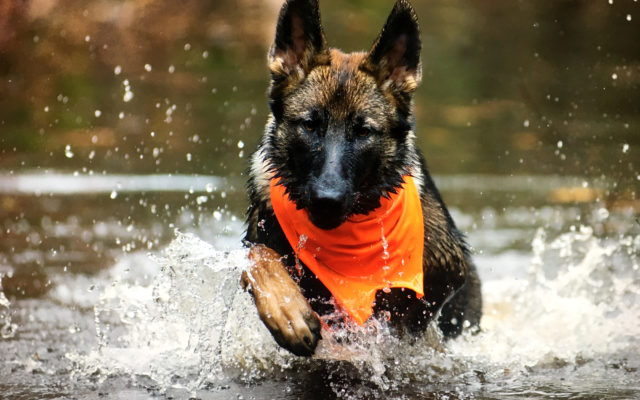
Why non-hunters in Maine should wear hunter orange in November
Hunter orange is a vibrant color with one job: to keep people visible. Throughout November, during Maine’s firearm season for deer, hunters are required by law to wear this bright hue. But for non-hunters, donning this color is optional.
So why should non-hunters wear hunter orange?
Throughout Maine, many of the properties that are open to hunting are also open to hiking, paddling, geocaching, ATVing and other outdoor activities. Hunters and non-hunters alike can enjoy the same natural areas. Therefore, wearing hunter orange — also known as blaze orange — is a wise precaution for anyone who is spending time outdoors, especially in the fall.
“Just because you’re not hunting doesn’t mean that you shouldn’t be seen,” said Maine Game Warden Paul Mason. “Wearing hunter orange hats and vests, something that can be seen from all sides, is important.”
In agreement, administrators of the popular Facebook page “Maine Hiking” have urged its 8,000-plus members to wear hunter orange throughout the fall while exploring local trails.
“Hikers should wear at least one piece of hunter orange viewable from all directions such as a hat, jacket or vest,” according to the flyer they posted on the page. “Also, cover your backpack with orange” and “don’t forget your pets!”
While it’s rare, a few dogs have been shot and killed in Maine because hunters mistook them for coyotes.
[Don’t forget to wrap your dog in hunter orange]
Hunter orange is a very specific color. The Maine hunting rulebook defines it as having “a daylight fluorescent orange color with a dominant wavelength between 595 and 605 nanometers, excitation purity not less than 85 percent and luminance factor of not less than 40 percent.”
Of course, the everyday person can’t measure nanometers. So how do you know if an article of clothing is hunter orange or not? Clothing manufacturers aren’t required to tag products that meet these specific requirements. It’s up to you to decide if an article of clothing is bright enough to qualify as hunter orange.
“A lot of its common sense,” said Ryan Nyer, president of Maine Military Supply, which sells a variety of hunter orange clothing for people and dogs. “It’s got to be a fairly bright color. It’s a very unnatural look in the Maine Woods, and that’s the idea — to stand out and be seen.”
Wearing bright colors can also be useful if a person becomes injured or lost in the outdoors, Nyer pointed out.
“There are all sorts of reasons to be visible in the woods,” he said. “It’s not just because you’re worried about someone accidentally mistaking you for a deer. Our hunter safety program in Maine is really good, so I don’t think that’s a huge concern for people.”
By Maine law, “a hunter may not shoot at a target without, at that point in time, being certain that it is the wild animal or wild bird sought.” However, accidents — though rare — have happened.
The exact dates of Maine hunting seasons shift a few days each year, depending on when weekends land. This year’s firearms season for deer begins on Saturday, Nov. 2, and runs through Saturday, Nov. 30. However, people who hunt with muzzleloaders can continue to hunt through Dec. 2, statewide, and through Dec. 9 in certain regions.
Also of note are several additional and overlapping hunting seasons. For example, this year’s extended archery season for deer, allowed only in designated areas, runs Sept. 7 through Dec. 14. A handful of hunters have permits to hunt moose Nov. 4 through Nov. 30, in Wildlife Management Districts 16 and 17, which extends just west of Bangor to Lewiston. Fall turkey hunting runs through Nov. 7. Pheasant, grouse and quail season runs through Dec. 31. And coyote hunting is permitted throughout much of the state year round.
Stay visible and share the woods.